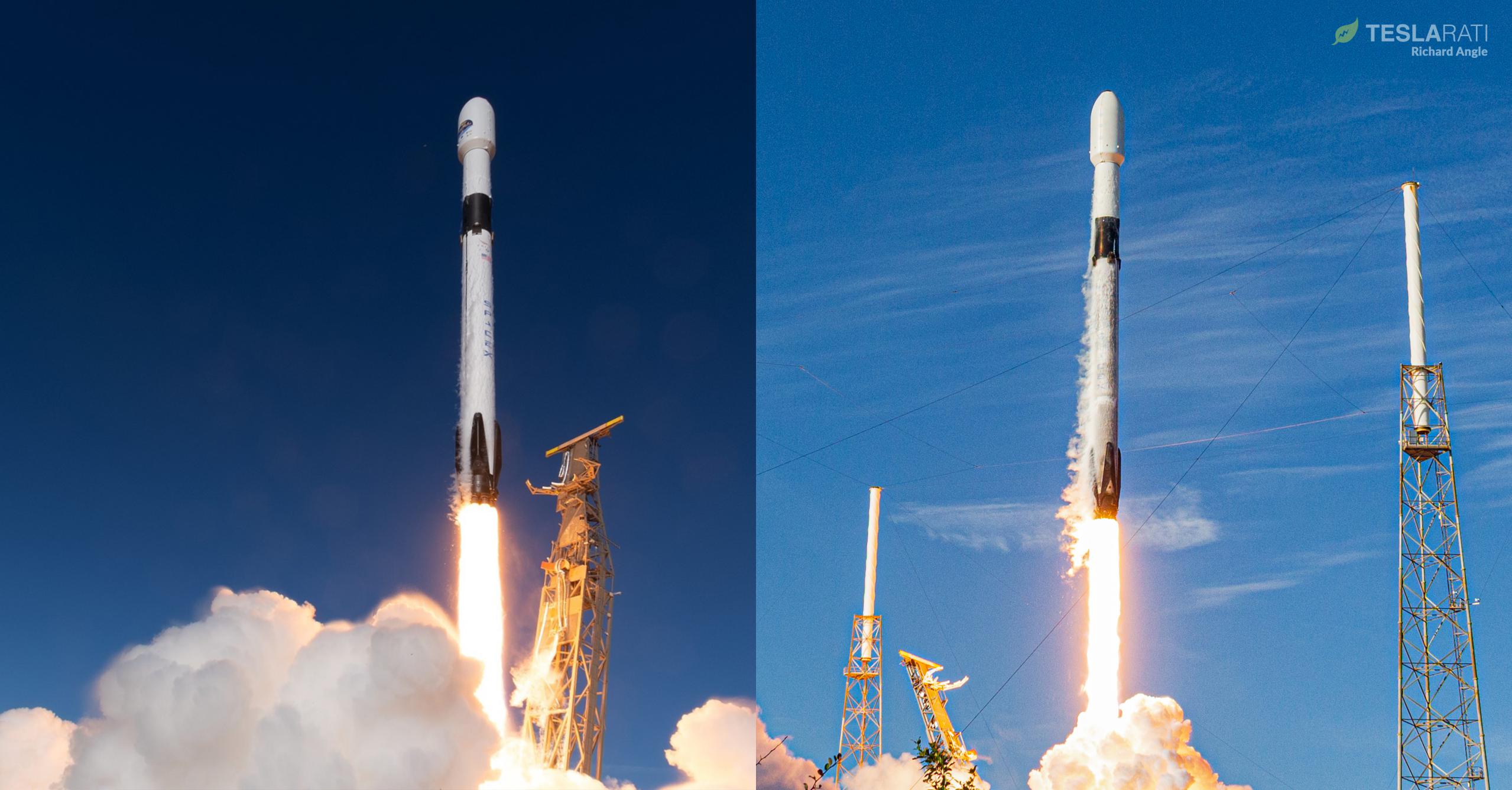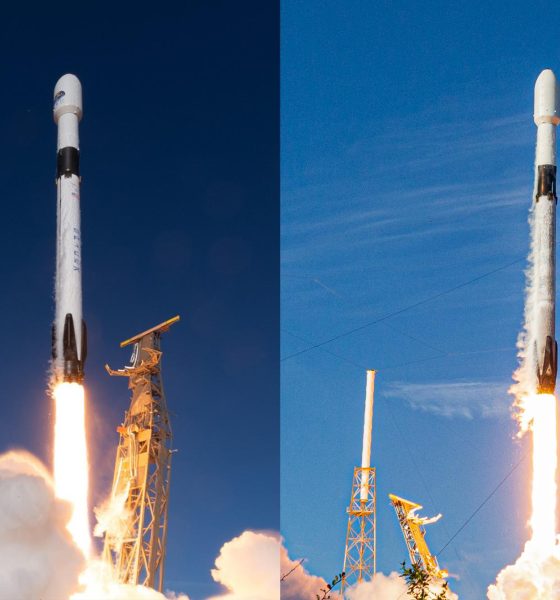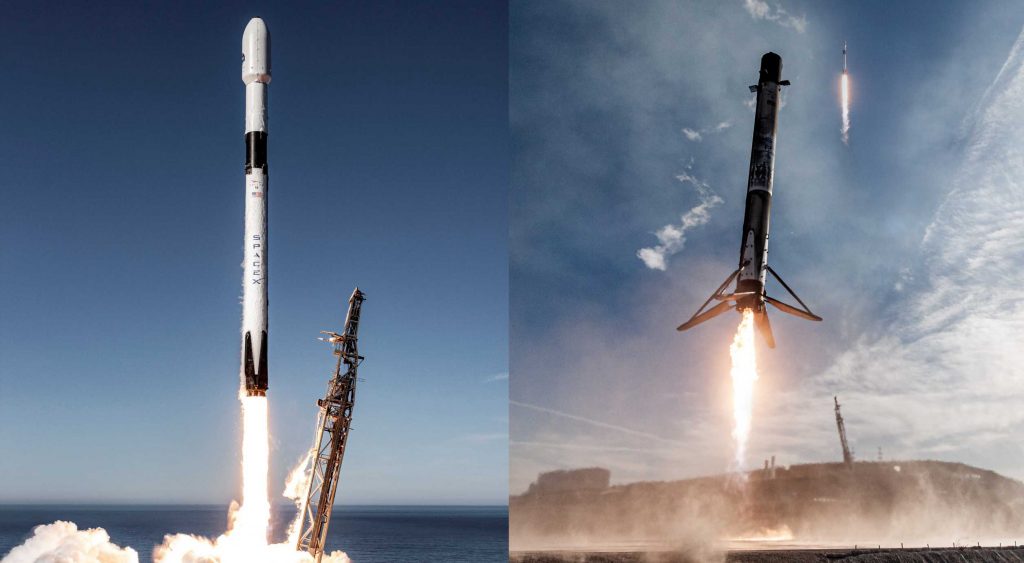

News
SpaceX schedules next Starlink launch, fires up rocket for asteroid redirect mission
Update: SpaceX has successfully static fired the Falcon 9 tasked with launching DART. The rocket will now roll back to SLC-4’s integration hangar for payload installation before rolling out to the pad a second time.
SpaceX has scheduled its next East Coast Starlink launch just a few weeks after the latest as a different Falcon 9 rocket prepares to launch NASA’s DART asteroid redirection demonstration mission.
On Tuesday, NASA confirmed that a SpaceX Falcon 9 rocket is on track to launch the Double Asteroid Redirect Test (DART) spacecraft no earlier than (NET) 10:21 pm PST on Tuesday, November 23rd (06:21 UTC 24 Nov). Following the successful launch of NASA and the European Space Agency’s (ESA) Sentinel 6A spacecraft in November 2020 and the first launch of a full batch of laser-linked Starlink satellites on September 14th, DART will be SpaceX’s third West Coast launch in just over 12 months and the first time the company has launched out of Vandenberg twice in one year since 2019.
Up next, Spaceflight Now and launch photographer Ben Cooper recently confirmed that SpaceX has already scheduled its next Starlink launch after a successful mission on November 13th, aiming to deliver another batch of ~53 laser-linked satellites to orbit NET 1:36am EST (06:36 UTC), Wednesday, December 1st.
Oddly, Spaceflight Now’s launch calendar indicates that SpaceX’s next Starlink launch won’t help recent confusion over the constellations mission naming scheme. SpaceX’s most recent Starlink launch was deemed “Starlink 4-1,” which is explained below.
“In simple terms, the first ~4400-satellite phase of SpaceX’s Starlink constellation is split into five groups of satellites – known as shells – with different orbital altitudes and inclinations (the orbit’s tilt). In May, SpaceX’s most recent East Coast Starlink launch effectively completed the first of those five shells or groups. With Starlink V1.5’s September debut, SpaceX also debuted a new naming scheme, deeming the mission Starlink 2-1 – the first launch of the second shell. Based on the inclination implied in Starlink 4-1’s hazard warning, Shell 4 refers to a second group of 1584 satellites almost identical to Shell 1, while Shell 2 is a semi-polar group of 720 satellites. That means that Shells 3 and 5 are sets of either 340 or 158 satellites at slightly different altitudes in polar orbit and will likely be the last Phase 1 Starlink satellites SpaceX launches.”
Teslarati.com — November 7th, 2021
SpaceX’s next Starlink launch, however, is apparently named “Starlink 4-3,” implying that the company has either skipped a launch or was forced to swap the order of two missions for unknown reasons (perhaps the same reason that Starlink 2-3 – itself leapfrogging 2-2 – was indefinitely delayed from an original October launch target. In short, aside from being few and far between for unspecified reasons, the sequencing of SpaceX Starlink launches have been a mess in the second half of 2021 and it doesn’t look like that’s going to change anytime soon.
Barring the delay of one or several other missions, CEO Elon Musk’s recent statement that SpaceX is “aiming [to launch] 80 tons” or ~175,000 pounds of payload in Q4 2021 leaves room for two more Starlink launches (including 4-3) in the last six weeks of the year.

In the meantime, as early as November 23rd, SpaceX is scheduled to launch DART to an unspecified orbit – perhaps a geostationary transfer orbit (GTO) but maybe directly into deep space, the latter of which would make it Falcon 9’s first launch beyond the Earth-Moon system. Despite the extremely light payload, Falcon 9 booster B1063 is expected to land at sea on drone ship Of Course I Still Love You (OCISLY), which falls in favor of a high-velocity Earth escape launch.
A SpaceX, JHUAPL (Johns Hopkins University Applied Physics Lab), and NASA team successfully mated the ~550-670 kg (1200-1500 lb) spacecraft to Falcon 9’s payload adapter on November 10th and are likely just a few days away from encapsulating DART inside the rocket’s comparatively massive payload fairing. Sans payload, Falcon 9 will likely roll out to SpaceX’s SLC-4E pad and perform a prelaunch static fire test any day now before heading back to the hangar for fairing installation.
Update: A NASASpaceflight.com forum member spotted Falcon 9 vertical while traveling by train past SpaceX’s Vandenberg launch pad, confirming that a static fire is imminent.

News
Tesla FSD fleet is nearing 7 billion total miles, including 2.5 billion city miles
As can be seen on Tesla’s official FSD webpage, vehicles equipped with the system have now navigated over 6.99 billion miles.

Tesla’s Full Self-Driving (Supervised) fleet is closing in on almost 7 billion total miles driven, as per data posted by the company on its official FSD webpage.
These figures hint at the massive scale of data fueling Tesla’s rapid FSD improvements, which have been quite notable as of late.
FSD mileage milestones
As can be seen on Tesla’s official FSD webpage, vehicles equipped with the system have now navigated over 6.99 billion miles. Tesla owner and avid FSD tester Whole Mars Catalog also shared a screenshot indicating that from the nearly 7 billion miles traveled by the FSD fleet, more than 2.5 billion miles were driven inside cities.
City miles are particularly valuable for complex urban scenarios like unprotected turns, pedestrian interactions, and traffic lights. This is also the difference-maker for FSD, as only complex solutions, such as Waymo’s self-driving taxis, operate similarly on inner-city streets. And even then, incidents such as the San Francisco blackouts have proven challenging for sensor-rich vehicles like Waymos.
Tesla’s data edge
Tesla has a number of advantages in the autonomous vehicle sector, one of which is the size of its fleet and the number of vehicles training FSD on real-world roads. Tesla’s nearly 7 billion FSD miles then allow the company to roll out updates that make its vehicles behave like they are being driven by experienced drivers, even if they are operating on their own.
So notable are Tesla’s improvements to FSD that NVIDIA Director of Robotics Jim Fan, after experiencing FSD v14, noted that the system is the first AI that passes what he described as a “Physical Turing Test.”
“Despite knowing exactly how robot learning works, I still find it magical watching the steering wheel turn by itself. First it feels surreal, next it becomes routine. Then, like the smartphone, taking it away actively hurts. This is how humanity gets rewired and glued to god-like technologies,” Fan wrote in a post on X.
News
Tesla starts showing how FSD will change lives in Europe
Local officials tested the system on narrow country roads and were impressed by FSD’s smooth, human-like driving, with some calling the service a game-changer for everyday life in areas that are far from urban centers.

Tesla has launched Europe’s first public shuttle service using Full Self-Driving (Supervised) in the rural Eifelkreis Bitburg-Prüm region of Germany, demonstrating how the technology can restore independence and mobility for people who struggle with limited transport options.
Local officials tested the system on narrow country roads and were impressed by FSD’s smooth, human-like driving, with some calling the service a game-changer for everyday life in areas that are far from urban centers.
Officials see real impact on rural residents
Arzfeld Mayor Johannes Kuhl and District Administrator Andreas Kruppert personally tested the Tesla shuttle service. This allowed them to see just how well FSD navigated winding lanes and rural roads confidently. Kruppert said, “Autonomous driving sounds like science fiction to many, but we simply see here that it works totally well in rural regions too.” Kuhl, for his part, also noted that FSD “feels like a very experienced driver.”
The pilot complements the area’s “Citizen Bus” program, which provides on-demand rides for elderly residents who can no longer drive themselves. Tesla Europe shared a video of a demonstration of the service, highlighting how FSD gives people their freedom back, even in places where public transport is not as prevalent.
What the Ministry for Economic Affairs and Transport says
Rhineland-Palatinate’s Minister Daniela Schmitt supported the project, praising the collaboration that made this “first of its kind in Europe” possible. As per the ministry, the rural rollout for the service shows FSD’s potential beyond major cities, and it delivers tangible benefits like grocery runs, doctor visits, and social connections for isolated residents.
“Reliable and flexible mobility is especially vital in rural areas. With the launch of a shuttle service using self-driving vehicles (FSD supervised) by Tesla in the Eifelkreis Bitburg-Prüm, an innovative pilot project is now getting underway that complements local community bus services. It is the first project of its kind in Europe.
“The result is a real gain for rural mobility: greater accessibility, more flexibility and tangible benefits for everyday life. A strong signal for innovation, cooperation and future-oriented mobility beyond urban centers,” the ministry wrote in a LinkedIn post.
News
Tesla China quietly posts Robotaxi-related job listing
Tesla China is currently seeking a Low Voltage Electrical Engineer to work on circuit board design for the company’s autonomous vehicles.

Tesla has posted a new job listing in Shanghai explicitly tied to its Robotaxi program, fueling speculation that the company is preparing to launch its dedicated autonomous ride-hailing service in China.
As noted in the listing, Tesla China is currently seeking a Low Voltage Electrical Engineer to work on circuit board design for the company’s autonomous vehicles.
Robotaxi-specific role
The listing, which was shared on social media platform X by industry watcher @tslaming, suggested that Tesla China is looking to fill the role urgently. The job listing itself specifically mentions that the person hired for the role will be working on the Low Voltage Hardware team, which would design the circuit boards that would serve as the nervous system of the Robotaxi.
Key tasks for the role, as indicated in the job listing, include collaboration with PCB layout, firmware, mechanical, program management, and validation teams, among other responsibilities. The role is based in Shanghai.
China Robotaxi launch
China represents a massive potential market for robotaxis, with its dense urban centers and supportive policies in select cities. Tesla has limited permission to roll out FSD in the country, though despite this, its vehicles have been hailed as among the best in the market when it comes to autonomous features. So far, at least, it appears that China supports Tesla’s FSD and Robotaxi rollout.
This was hinted at in November, when Tesla brought the Cybercab to the 8th China International Import Expo (CIIE) in Shanghai, marking the first time that the autonomous two-seater was brought to the Asia-Pacific region. The vehicle, despite not having a release date in China, received a significant amount of interest among the event’s attendees.








